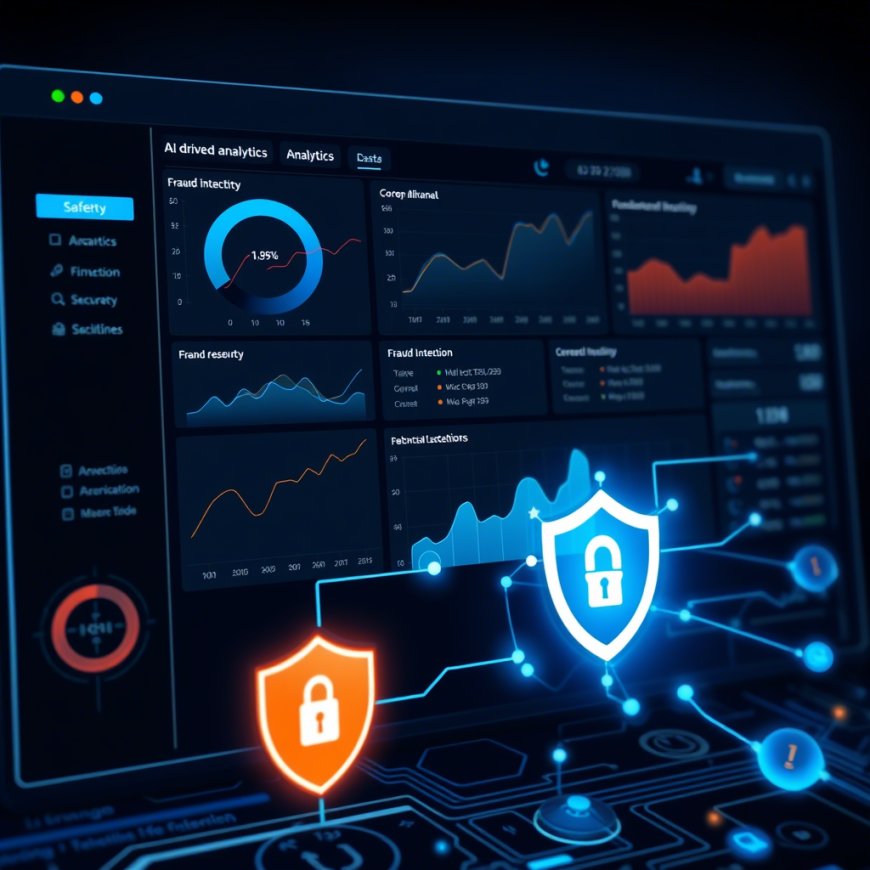Using AI to Detect Fraud in Financial Transactions
Discover how AI is revolutionizing fraud detection in 2024. Learn about machine learning, real-time analytics, and actionable strategies to safeguard financial transactions.

Introduction
Financial fraud costs businesses $5.72 trillion annually (Association of Certified Fraud Examiners), and traditional rule-based systems are struggling to keep up. Enter AI—today’s digital watchdog that sniffs out fraud in milliseconds, adapts to new threats, and slashes false alarms. From credit card scams to invoice fraud, here’s how AI is rewriting the rules of financial security in 2024.
How AI Detects Fraud: Beyond Basic Algorithms
AI uses advanced techniques to spot suspicious patterns humans (or older systems) miss:
-
Machine Learning (ML): Analyzes historical data to flag anomalies (e.g., sudden $10,000 wire transfer from a typically low-activity account).
-
Natural Language Processing (NLP): Scans emails or invoices for phishing keywords or mismatched vendor details.
-
Behavioral Biometrics: Tracks user habits like typing speed or mouse movements to detect account takeovers.
-
Network Analysis: Maps transaction chains to uncover money laundering rings or shell companies.
Real-World Example: PayPal’s AI analyzes 16 billion transactions/year, blocking fraudulent payments with 99.9% accuracy.
2024’s Top AI Fraud Detection Trends
1. Real-Time Adaptive Learning
-
AI models update in real time, learning from new fraud patterns (e.g., deepfake voice scams).
-
Tools like Feedzai adjust risk scores during transactions, reducing false declines by 30%.
2. Explainable AI (XAI)
-
Regulators demand transparency. Tools like Fiddler AI “explain” why a transaction was flagged (e.g., “Unusual purchase location + high amount”).
3. Generative AI for Synthetic Fraud Data
-
Platforms like Mostly AI generate synthetic transaction data to train models without compromising real customer info.
4. Blockchain-Powered Audits
-
AI paired with blockchain (e.g., Chainalysis) creates immutable audit trails for crypto fraud detection.
5. Cross-Industry Collaboration
-
Banks, fintechs, and retailers share anonymized fraud data via AI platforms (e.g., Sardine) to outsmart global scammers.
Benefits of AI-Driven Fraud Detection
-
Speed: Detect fraud in under 100 milliseconds (vs. hours manually).
-
Accuracy: Reduce false positives by 50% with contextual analysis.
-
Cost Savings: Forrester estimates AI cuts fraud management costs by 25% annually.
-
Customer Trust: Prevent breaches without disrupting legitimate transactions.
Top AI Tools for Fraud Detection in 2024
-
DataVisor: Uses unsupervised ML to detect unknown fraud patterns.
-
Featurespace: Adaptive behavioral analytics for banking and gaming.
-
Kount: AI-driven identity trust solutions for e-commerce.
-
Darktrace: Self-learning AI that spots insider threats and invoice fraud.
-
Simility (PayPal): Customizable risk rules and deep learning models.
Implementing AI Fraud Detection: Best Practices
-
Start with High-Risk Areas: Focus on payment gateways, account logins, or P2P transfers.
-
Combine AI with Human Oversight: Use AI to flag risks, then investigators validate.
-
Ensure Data Quality: Train models on diverse, clean datasets to avoid bias.
-
Monitor Model Drift: Regularly retrain AI to adapt to evolving tactics (e.g., AI-generated phishing emails).
Challenges & Ethical Considerations
-
Privacy Concerns: Balancing fraud detection with GDPR/CCPA compliance.
-
Bias in Training Data: Poor data can lead to unfair targeting of demographics.
-
Adversarial Attacks: Hackers use AI to bypass fraud systems (e.g., mimicry fraud).
Pro Tip: Audit AI models quarterly for accuracy and fairness.
Case Study: How a Bank Reduced Fraud Losses by 60%
A European bank deployed Featurespace’s ARIC platform, which uses behavioral AI to spot account takeover attempts. Result: Fraud losses dropped by 60% in 6 months, with 80% fewer false positives.
The Future of AI in Fraud Detection
-
Quantum ML: Process complex fraud patterns exponentially faster.
-
Emotion AI: Detect stress or deception in voice/video transactions.
-
Decentralized AI: Federated learning models that train across institutions without sharing raw data.
Conclusion
AI isn’t just catching fraud—it’s staying three steps ahead of criminals. By combining real-time analytics, adaptive learning, and ethical oversight, businesses can protect revenue and customer trust. Ready to fortify your defenses? Pilot tools like DataVisor or Kount and turn fraud detection into a competitive edge.
What's Your Reaction?
 Like
0
Like
0
 Dislike
0
Dislike
0
 Love
0
Love
0
 Funny
0
Funny
0
 Angry
0
Angry
0
 Sad
0
Sad
0
 Wow
0
Wow
0







































